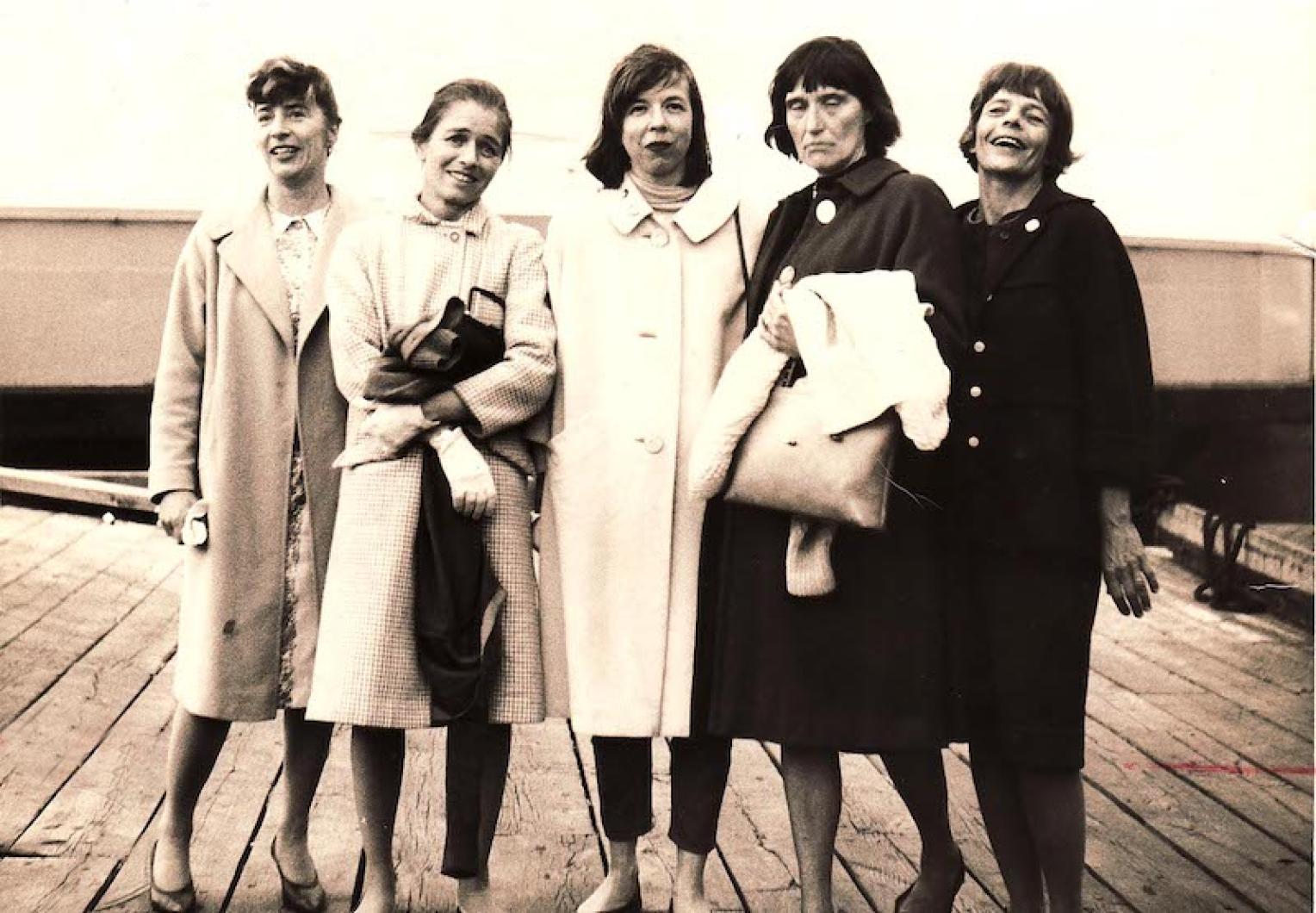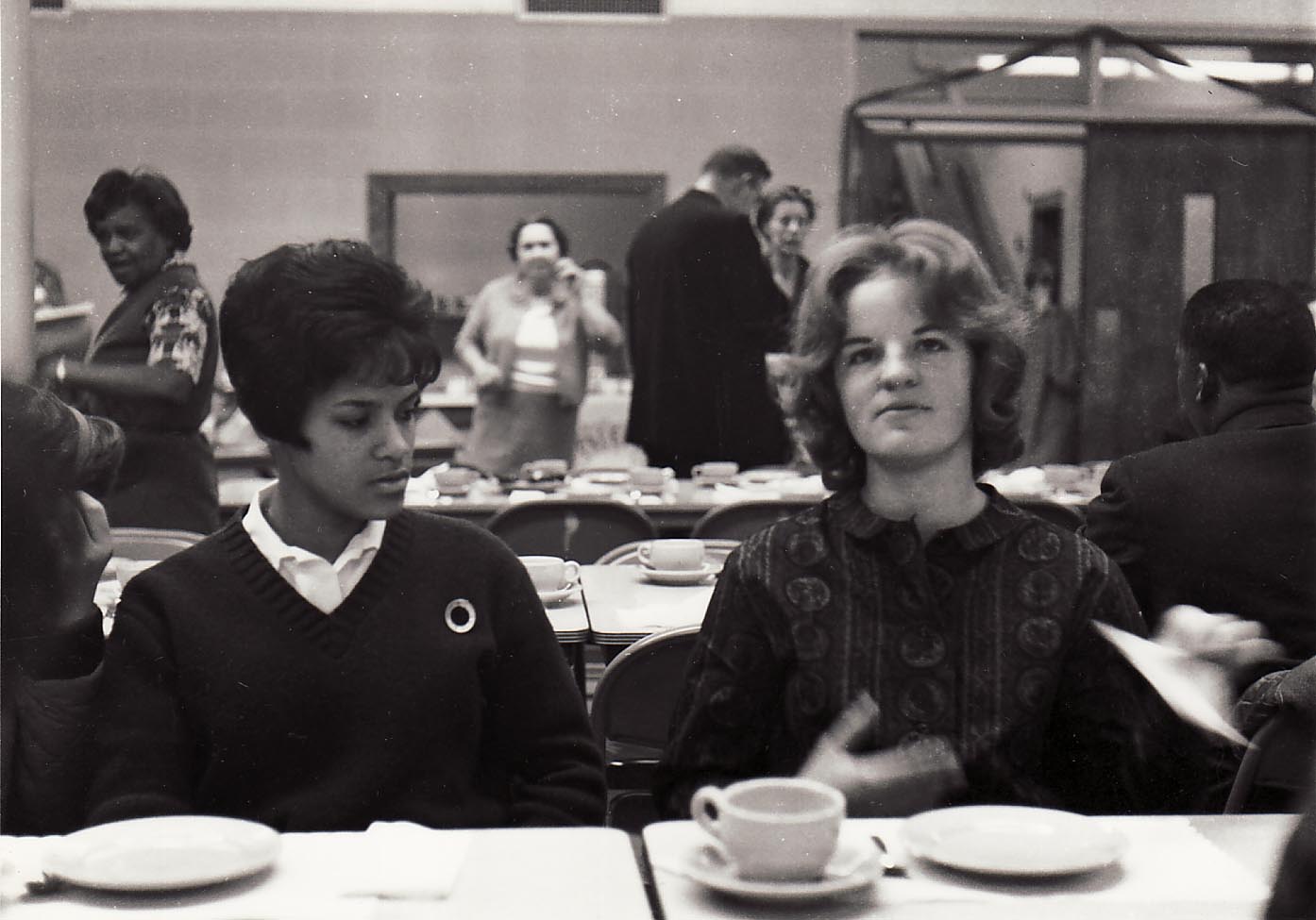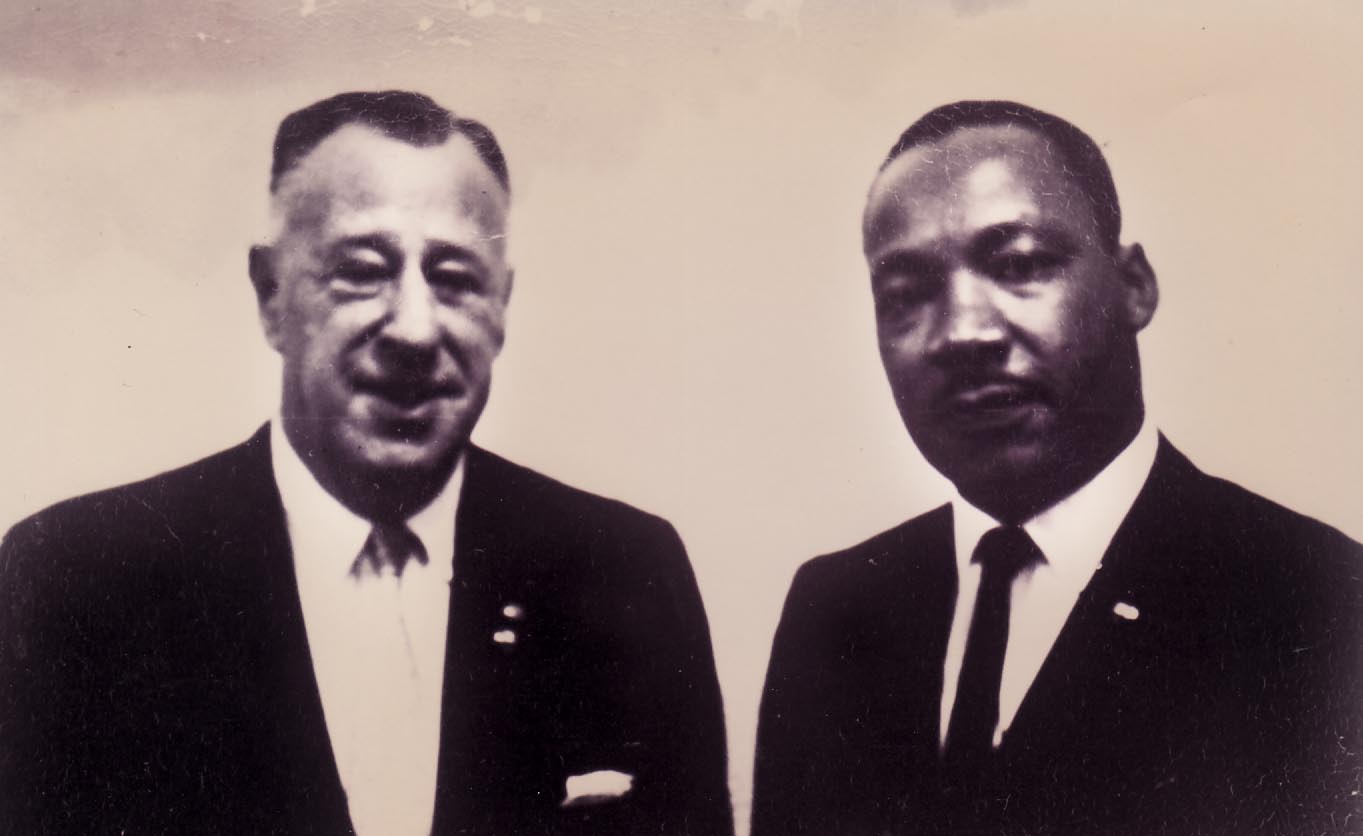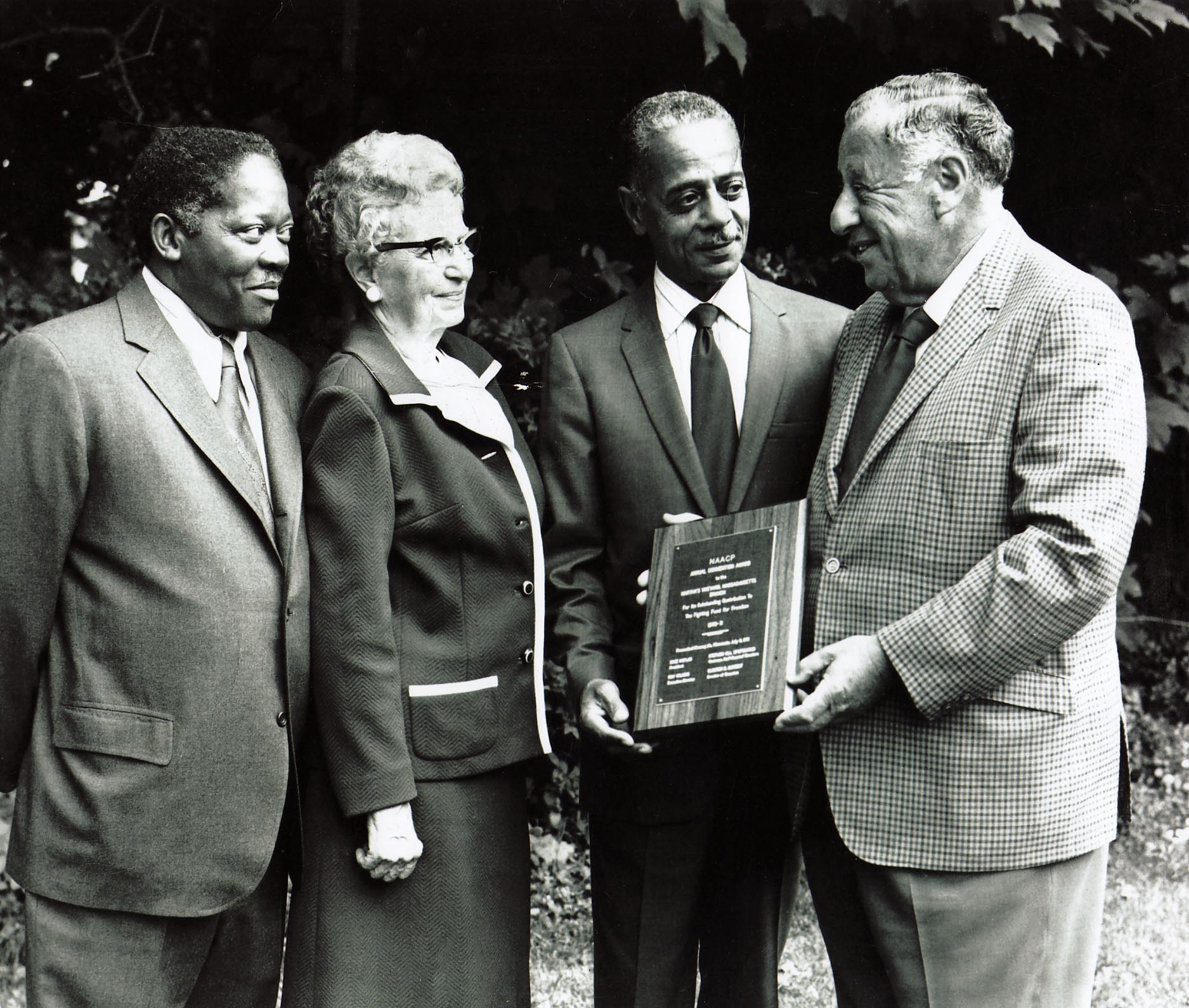On Sunday afternoon, a plaque will be unveiled in West Tisbury in celebration of a small group of town women who, nearly 50 years ago, took a little risk to play a part in a glorious, heroic and sweeping change in our national history.
It was the spring of 1964. John F. Kennedy had been assassinated and the tension of tumult in the deep South was slowly seeping into the far reaches of the country. Here on Martha’s Vineyard, people had reached their breaking point. On Nov. 22, 1963, the day Kennedy was shot, a group of Vineyarders established a local chapter of the National Association for the Advancement of Colored People (NAACP).
Membership did not know boundaries. Blacks joined whites, men joined women, summer residents joined members of the year-round community. Among the founders were three women from West Tisbury: Nancy Hodgson Whiting, the West Tisbury librarian and tax collector, her best friend, television writer Virginia Mazar, and Polly Murphy, a housewife. “It’s almost like a saturated solution,” Mrs. Whiting told oral historian Linsey Lee in 1993. “You know that process in chemistry? You use a vehicle of liquid and you begin to drop a substance in drop by drop, and when it holds all it can, one more drop and the whole thing crystallizes. It was like that . . . It was the gathering sense that we could be of influence.”
Among its early initiatives, the association began a drive to collect food and clothing for the people of Williamston, North Carolina. A few Vineyarders, including Rector Henry Bird of the Grace Church, had established a connection to the town and its community of black people. Come spring, the donations had to be delivered to the South. The three West Tisbury ladies, joined by Mrs. Murphy’s sister, Nancy Smith, a writer, and Margaret (Peg) Lillienthal, volunteered to load up their cars and make the drive. They traded in their up-Island jeans and donned white gloves and skirts. They figured should they find themselves in trouble, Southern men would have a harder time arresting ladies in gloves.
The women decided that while in the South, they would register voters. “We knew it was dangerous,” Mrs. Whiting told Ms. Lee. “We didn’t know if we would come back alive. I thought it through very carefully before leaving. But quietly — I didn’t talk to anyone about it. I wound up thinking that I wouldn’t want my grandchildren to know I’d had a chance to influence people in this way and turned it down.”

The women arrived in Williamston successfully, but were unable to register a single voter. Blacks answering their doors were wary of properly dressed white women with Northern accents. Determined to show their opposition to segregation and racial inequality, the women joined a protest outside of Sears, Roebuck. The protest lasted five minutes before the ladies found themselves in handcuffs.
They spent one night in jail and, after receiving bail from the Vineyard, drove home. They declared the mission successful and so does Dr. Elaine Cawley Weintraub, a history teacher at the high school and co-founder of the African American Heritage Trail of Martha’s Vineyard, the organization hosting Sunday’s event.
“They took this enormous risk that doesn’t strike us as a big risk,” said Dr. Weintraub. “They were putting their life behind the pursuit of justice.”
Dr. Weintraub knows something about taking a risk in pursuit of justice. In the early 1990s, she was a teacher at the Oak Bluffs School. She was beginning a unit on local history and wanted to include the history of African Americans on the Island. But, when she went to the school’s library, there were no books on the subject. She went to the local bookstores and town libraries. Nothing. She knew the history was out there and so Dr. Weintraub rolled up her sleeves and got to work conducting her own research.
A few years in, someone steered her to Carrie Tankard, vice president of the Martha’s Vineyard chapter of the NAACP, who was actively, but somewhat unsuccessfully, trying to incorporate local African American history into the schools. Together, Dr. Weintraub and Mrs. Tankard established the heritage trail, a physical, hands-on way to educate the community. In 1997, the trail began when the first plaque was unveiled in Oak Bluffs at the Shearer Cottage, the first African-American-owned guest house on the Vineyard. From there, the two charted locations or people throughout the Island that have had an impact on the Vineyard’s African American history, and the trail grew. “The things and people on the trail had a presence or made a contribution that has made a huge difference on this Island,” Dr. Weintraub said.
The two incorporated the trail into the school curriculum, making work on the trail part of a local history unit for sophomores at the high school. “For students, this really means something,” said Dr. Weintraub. “This is their Island, this is their home, this is their history.” Today, the trail has 16 sites. As of this weekend, there will be 17.
The celebration on Sunday marks the unveiling of the latest plaque and commemorates the five West Tisbury women who made the trip to Williamston. The plaque is situated outside the old West Tisbury library on Music street, where Mrs. Whiting worked for so many years. Its message is simple. “If you let fear in,” it reads, “pretty soon, you’re all fear.” The words were spoken to the women by Sarah Small, a black women they met while in North Carolina. At 1 p.m. on Sunday, the plaque will be unveiled, followed by a brief reception at the West Tisbury Congregational Church. Dr. Weintraub said that she expected at least two of the ladies, Mrs. Smith and Mrs. Murphy, to return for the unveiling. A mobile display will be up at the West Tisbury library, where it will stay for a few weeks before making its way to libraries around the Island.
Sometime this fall, the trail will unveil its 18th plaque outside of St. Andrew’s Episcopal Church. It will commemorate the local chapter of the NAACP. The site was chosen deliberately. The chapter had its first meeting in the church basement.
In her interviews with Ms. Lee, found in the book Vineyard Voices, Mrs. Whiting’s tale provides a shining example of how five little stones dropped into a pond can make a ripple that extends for miles. “There we were,” she said, “in this wild, larger-than-life kind of thing — the feeling that a person or group of people can have a real influence and effect on the course of events.”










Comments
Comment policy »